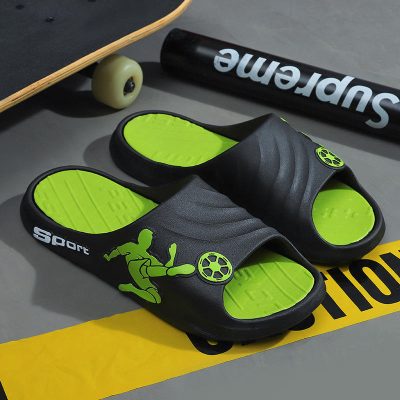Indoor and outdoor slipper soles are designed to meet the specific demands of their respective environments, offering different features and functionalities. Here’s a comparison of indoor vs. outdoor slipper soles:
Indoor Slipper Soles:
Features:
- Softness and Comfort: Indoor slipper soles prioritize comfort and cushioning, typically using materials like memory foam, soft EVA foam, or plush fleece to provide a cozy feel underfoot.
- Lightweight and Flexible: Indoor slippers are often lightweight and flexible, allowing for natural foot movement and ease of wear around the house.
- Non-Slip Traction: While indoor slipper soles may have some traction features, they typically focus less on aggressive tread patterns and more on providing grip on indoor surfaces such as hardwood, tile, or carpet.
- Breathability: Indoor slipper soles may feature breathable materials like cotton, wool, or moisture-wicking fabrics to keep feet comfortable and dry indoors.
Use Cases:
- Indoor slipper soles are ideal for wearing around the house for activities such as lounging, cooking, cleaning, or working from home.
- They provide comfort and warmth without the need for heavy-duty traction or weather resistance, making them suitable for indoor use only.
Outdoor Slipper Soles:
Features:
- Durability and Weather Resistance: Outdoor slipper soles are designed to withstand outdoor conditions, featuring durable materials like rubber or tough EVA foam that provide protection against wear, moisture, and rough surfaces.
- Enhanced Traction: Outdoor slipper soles typically have more aggressive tread patterns or rubber outsoles with superior grip to provide traction on various outdoor surfaces, including pavement, gravel, or grass.
- Stability and Support: Outdoor slippers may offer additional stability features such as arch support, heel cushions, or reinforced construction to provide support during outdoor activities.
- Water Resistance: Many outdoor slipper soles are water-resistant or quick-drying, making them suitable for wearing in damp or rainy conditions without compromising comfort.
Use Cases:
- Outdoor slipper soles are suitable for wearing outside the house for activities such as gardening, walking the dog, running errands, or lounging on the patio.
- They offer durability, traction, and weather resistance, allowing wearers to move comfortably and confidently in outdoor environments.
Conclusion:
The main differences between indoor and outdoor slipper soles lie in their design, features, and intended use cases. Indoor slipper soles prioritize comfort, softness, and breathability for indoor wear, while outdoor slipper soles focus on durability, traction, and weather resistance for outdoor activities. Choosing the right type of slipper sole depends on where you plan to wear them and the specific features you need for comfort and functionality.


















